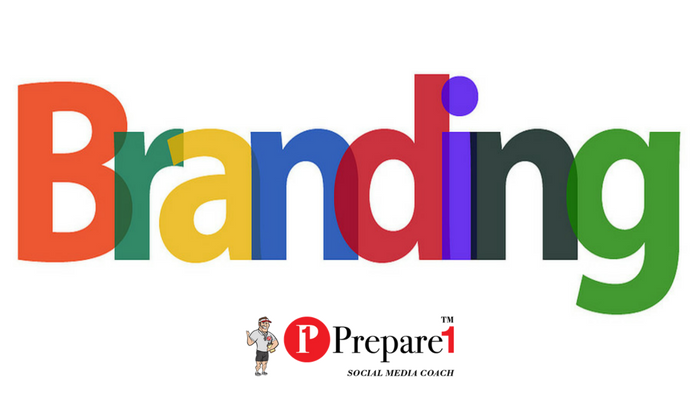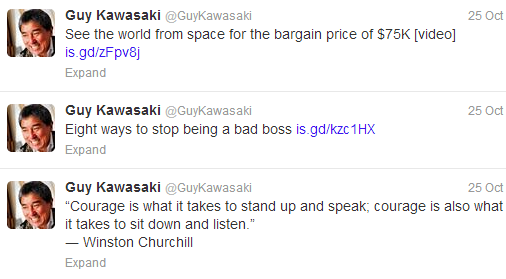
“If a group of children goes for a walk, which child determines the speed of the entire group?”
When I ask this question during my presentations they will always reply and say, “The slowest child.” Exactly.
Your “slowest kid” is your weakest key skill. It sets the speed at which you move ahead in your life career, and business. It determines the heights that you reach. And here is another important point.
You are almost invariably weak in an area that you do not particularly like or enjoy. But the reason that you do not like or enjoy that area is because you have not yet mastered that area. Most older generations do not like technology, or maybe it’s just a fear. Millennials on the other hand embrace it, use it for social media and communicating. They grew up with it, so it’s more natural.
Older workers must overcome their fear and embrace learning new skills or fall further behind in a face paced world.
The day you stop learning is the day you die.
As soon as you write it down, make a plan, and develop excellence in a particular skill area, you will like and enjoy performing in that area for the rest of your life or career.
Social media and real-time business affects every employee in your organization in some way. Your official social media team—the people tasked with developing and maintaining your social outposts and real-time customer connectivity—are a critical part of your approach. But the rest of your employees are equally important to consider, as many of them will have to incorporate some measure of new responsibilities into their existing job functions.
Increasingly, social media needs to become a skill, not a job.
Ask yourself this question, ”What one social media skill, if I developed and did it consistently in an excellent fashion, would have the greatest positive impact on my life, business and career?”
1. BRAND MANAGEMENT
Once upon a time, the only people who really needed to “get” your brand were the ones who built its external facade: marketing, public relations, and corporate communications. Now you need to give everyone some guidelines but also the freedom to articulate and represent your company in their own authentic way.
There are 3 pillars of brand management on social
As per the brand management guide published some time ago, the three essential principles of any branding strategy include: uniqueness, positivity and consistency.
In other worlds, one needs to manage their brand online in such a way that:
- It stands out among other brands
- It’s associated with something positive
- It doesn’t sink into oblivion once your promo campaign is over
Everybody in your company is in marketing, whether they want to be or not.

Leaders must become tutors and strategic orchestrators of all social-media activities within their control, including the establishment of new roles that support the logic of networked communication. Organizational units that leverage the new technologies in a coordinated and strategically aligned way will become more visible and gain influence in a corporation’s overall power dynamics.
2. LISTENING
Having a finger on the pulse of how social media and the activity within it affects your company, your department, and your industry is a universal responsibility. Soon, it won’t be enough to have just a centralized “listener” and you’ll need each division and department (and the people within them) to be listening for their own unique purposes.

Listening
Social media is reshaping the leadership culture by pushing executives to span geographic boundaries, engage more closely with stakeholders, and amplify the impact of employees at the periphery.
3. ENGAGEMENT
Your social media representatives will do most of the online communication with your customers and prospects—but not all. The current is sometimes too swift and the river too broad for one or two social media specialists to manage all the online touch points. The rest of your team can help by knowing how and where and when to engage, too. Build education and training programs for those who want to get involved, and help them be part of the effort.
4. CONTENT
Content is the Oxygen for Social Media
Social media also adds new dimensions to these traits. For example, it requires the ability to create compelling, engaging multimedia content. Leaders need to excel at co creation and collaboration—the currencies of the social-media world. Executives must understand the nature of different social-media tools and the unruly forces they can unleash.
Equally important, there’s an organizational dimension: leaders must cultivate a new, technologically linked social infrastructure that by design promotes constant interaction across physical and geographical boundaries, as well as self-organized discourse and exchange.
With video cameras achieving near ubiquity and film clips uploading in the blink of an eye to YouTube or other platforms, the tools for producing and sharing rich media are in everyone’s hands.
Too much perfection is actually a barrier to collaboration and co creation, as it disinvites participation. To thrive in the world of social media, leaders need to acquire a mind-set of openness and imperfection, and they must have the courage to appear “raw” and unpolished—traits that may be as challenging for them as developing the creative and technical-production skills.
Repurpose Content
Time is such a crucial asset for small businesses. Repurposing content WILL save you time!
Repurposing content is taking existing content and putting a spin on it. Most of the time required for creating content is spent researching facts, finding relevant pictures, etc. Why put in all that work and then only use it once?
Review some of the content you have already created and see if you can repurpose it! One example would be turning a text-based blog post into an infographic. You can use all the same statistics, but visual content will resonate with a new audience. Another example would be turning that epic “List of Amazing Facts About…” blog post you wrote into smaller, more in-depth posts.
5. CONSISTENCY
Life happens…Right?
The downfall of many in life and business has been inconsistency.
It is equally important to be consistent about the kind of posts you create. For example, Guy Kawasaki is one of the top tweeps whose posts are a predictable mix of wise quotes, science news, geek fun, social life, politics and, of course, online marketing.
This could actually be the secret behind his popularity – he is expectedly eclectic.

Creating a consistent brand identity requires consistent posting habits. Sounds like a no brainer, right?
Nothing hurts a business more than creating social media accounts and then not posting to them. If a potential customer searches for your business on Facebook and sees that you have not posted in a month, they could easily assume you went out of business. Terrible, right?
Investing in a social media management tool will help you to plan out posts ahead of time and make sure that your brand is posting consistently.
6. VISUAL THINKING
This is perhaps the biggest change in the past year or two. Being a great writer was formerly a key characteristic of many social pros, as being able to coherently write in 140 characters isn’t as easy as it appears.
Today, with every social network embracing visuals and multi-media, being able to represent the brand visually is absolutely critical. This is a real challenge for many community managers who come from the PR/communications side of things, and all of a sudden need to be quasi graphic designers.

Photos and Videos
- 74% of social media marketers use visual assets in their social media marketing, ahead of blogs (68%) and videos (60%). (Source)
- When people hear information, they’re likely to remember only 10% of that information three days later. However, if a relevant image is paired with that same information, people retained 65% of the information three days later. (Source)
- By 2017, video content will represent 74% of all internet traffic. (Source)
- Cisco projects that global internet traffic from videos will make up 80% of all internet traffic by 2019. (Source)
- 76.5% of marketers and small business owners in an Animoto survey who have used video marketing say it had a direct impact on their business. (Source)
- More than 60% of marketers and small business owners said they planned to increase investment in video marketing in 2017. (Source)
7. METRICS TO TRACK SOCIAL MEDIA SUCCESS
Do you want to measure the impact of your social media marketing efforts?
Wondering which social media metrics you should focus on?
Analyzing the raw data on campaign performance helps you determine which tactics are working.
Track Follower Growth
Your total count of fans, followers, and page likes represents the number of unique people who have taken an interest in your business. Ideally, you should consistently grow your following. This means the content you’re sharing and the ways you’re engaging your audience need to be enticing enough to attract new fans.
On Facebook, it’s easy to get a detailed analysis of your number of page likes. Go to your page and click the Insights tab. Then click Likes in the left navigation.
On Twitter, you can find your follower count on your Twitter account page.
To view trends and statistics for your followers, visit Twitter Analytics. Click on your profile picture at the top right of any Twitter page and choose Analytics from the drop-down menu.
Identify Optimal Times for Engagement
Knowing when your audience is most likely to engage with your content is important. It helps you tailor your strategy so you post your content at the right time (when your audience is most active) and the best days of the week.
Track Likes and Reactions for Your Posts
Gauging how your audience reacts to the content you post and share is crucial for any marketing strategy. This direct response metric helps you determine whether your audience is interested in what you’re currently publishing, and should inform the type of content you share in the future.
If your only engagement is chirping crickets on certain topics, cut that content from your editorial calendar or send those articles through another channel to a different audience segment that might be more receptive.
FINAL THOUGHTS
Your first job is to identify these key social media skills and write them down.
Excellence orientation requires that you make a list of the key social media skills that are essential for success in your life, career and business.
Here is an interesting discovery. You have achieved your of success in your field today because of your talent and ability in certain key areas. But at the same time, you are being held back by your weaknesses in other areas.
The rule is that your weakest key skill determines the height of your results, and your income. In other words, you could be excellent at six out of seven key result areas, but your weakness in the seventh area will determine your overall results and rewards in that job or field.
You therefore ask yourself this question, ”What one social media skill, if I developed and did it consistently in an excellent fashion, would have the greatest positive impact on my life, business and career?”
Make a plan, work on your plan to develop the essential social media skills you need every single day. In no time at all, you will be amazed at how quickly your life and business changes for the better.
About Blair

Blair Evan Ball is a Social Media Coach and founder of Prepare1, a company that works with businesses, individuals and non-profits. He is a former executive with a Fortune 50 company, and his national division did $1Billion+ in sales annually.
Blair has written three e-books: Facebook for Business Made Easy, Facebook Pages for Business Made Easy, and WordPress Blog Setup Made Easy.
Blair also educates, trains entrepreneurs and business professionals how to amplify their brand, increase revenues, and raise more funds.
![[Study] How Will Businesses Change Their Social Media Activities 5 Golden Rules for Sharing on Social Media](https://www.prepare1.com/wp-content/uploads/2014/03/COACH-logohat-162x300.jpg) The Race is ON! | PREPARE | Get into the Game and WIN!
The Race is ON! | PREPARE | Get into the Game and WIN!










Comments on this entry are closed.
{ 6 trackbacks }